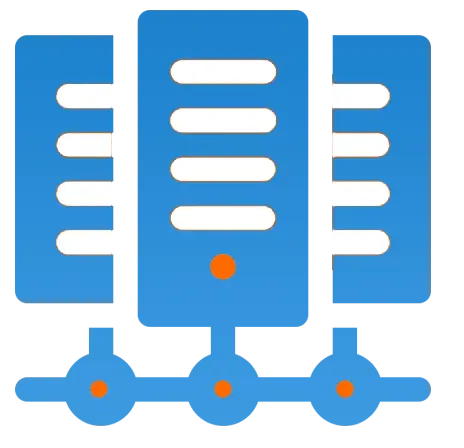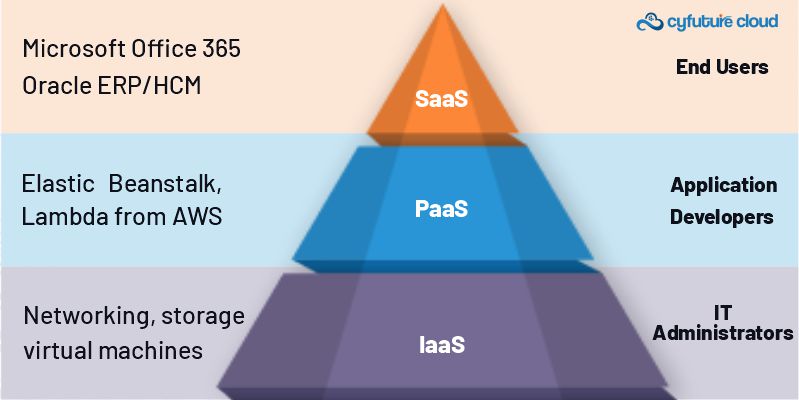Get 69% Off on Cloud Hosting : Claim Your Offer Now!
- Products
-
Compute
Compute
- Predefined TemplatesChoose from a library of predefined templates to deploy virtual machines!
- Custom TemplatesUse Cyfuture Cloud custom templates to create new VMs in a cloud computing environment
- Spot Machines/ Machines on Flex ModelAffordable compute instances suitable for batch jobs and fault-tolerant workloads.
- Shielded ComputingProtect enterprise workloads from threats like remote attacks, privilege escalation, and malicious insiders with Shielded Computing
- GPU CloudGet access to graphics processing units (GPUs) through a Cyfuture cloud infrastructure
- vAppsHost applications and services, or create a test or development environment with Cyfuture Cloud vApps, powered by VMware
- Serverless ComputingNo need to worry about provisioning or managing servers, switch to Serverless Computing with Cyfuture Cloud
- HPCHigh-Performance Computing
- BaremetalBare metal refers to a type of cloud computing service that provides access to dedicated physical servers, rather than virtualized servers.
-
Storage
Storage
- Standard StorageGet access to low-latency access to data and a high level of reliability with Cyfuture Cloud standard storage service
- Nearline StorageStore data at a lower cost without compromising on the level of availability with Nearline
- Coldline StorageStore infrequently used data at low cost with Cyfuture Cloud coldline storage
- Archival StorageStore data in a long-term, durable manner with Cyfuture Cloud archival storage service
-
Database
Database
- MS SQLStore and manage a wide range of applications with Cyfuture Cloud MS SQL
- MariaDBStore and manage data with the cloud with enhanced speed and reliability
- MongoDBNow, store and manage large amounts of data in the cloud with Cyfuture Cloud MongoDB
- Redis CacheStore and retrieve large amounts of data quickly with Cyfuture Cloud Redis Cache
-
Automation
Automation
-
Containers
Containers
- KubernetesNow deploy and manage your applications more efficiently and effectively with the Cyfuture Cloud Kubernetes service
- MicroservicesDesign a cloud application that is multilingual, easily scalable, easy to maintain and deploy, highly available, and minimizes failures using Cyfuture Cloud microservices
-
Operations
Operations
- Real-time Monitoring & Logging ServicesMonitor & track the performance of your applications with real-time monitoring & logging services offered by Cyfuture Cloud
- Infra-maintenance & OptimizationEnsure that your organization is functioning properly with Cyfuture Cloud
- Application Performance ServiceOptimize the performance of your applications over cloud with us
- Database Performance ServiceOptimize the performance of databases over the cloud with us
- Security Managed ServiceProtect your systems and data from security threats with us!
- Back-up As a ServiceStore and manage backups of data in the cloud with Cyfuture Cloud Backup as a Service
- Data Back-up & RestoreStore and manage backups of your data in the cloud with us
- Remote Back-upStore and manage backups in the cloud with remote backup service with Cyfuture Cloud
- Disaster RecoveryStore copies of your data and applications in the cloud and use them to recover in the event of a disaster with the disaster recovery service offered by us
-
Networking
Networking
- Load BalancerEnsure that applications deployed across cloud environments are available, secure, and responsive with an easy, modern approach to load balancing
- Virtual Data CenterNo need to build and maintain a physical data center. It’s time for the virtual data center
- Private LinkPrivate Link is a service offered by Cyfuture Cloud that enables businesses to securely connect their on-premises network to Cyfuture Cloud's network over a private network connection
- Private CircuitGain a high level of security and privacy with private circuits
- VPN GatewaySecurely connect your on-premises network to our network over the internet with VPN Gateway
- CDNGet high availability and performance by distributing the service spatially relative to end users with CDN
-
Media
-
Analytics
Analytics
-
Security
Security
-
Network Firewall
- DNATTranslate destination IP address when connecting from public IP address to a private IP address with DNAT
- SNATWith SNAT, allow traffic from a private network to go to the internet
- WAFProtect your applications from any malicious activity with Cyfuture Cloud WAF service
- DDoSSave your organization from DoSS attacks with Cyfuture Cloud
- IPS/ IDSMonitor and prevent your cloud-based network & infrastructure with IPS/ IDS service by Cyfuture Cloud
- Anti-Virus & Anti-MalwareProtect your cloud-based network & infrastructure with antivirus and antimalware services by Cyfuture Cloud
- Threat EmulationTest the effectiveness of cloud security system with Cyfuture Cloud threat emulation service
- SIEM & SOARMonitor and respond to security threats with SIEM & SOAR services offered by Cyfuture Cloud
- Multi-Factor AuthenticationNow provide an additional layer of security to prevent unauthorized users from accessing your cloud account, even when the password has been stolen!
- SSLSecure data transmission over web browsers with SSL service offered by Cyfuture Cloud
- Threat Detection/ Zero DayThreat detection and zero-day protection are security features that are offered by Cyfuture Cloud as a part of its security offerings
- Vulnerability AssesmentIdentify and analyze vulnerabilities and weaknesses with the Vulnerability Assessment service offered by Cyfuture Cloud
- Penetration TestingIdentify and analyze vulnerabilities and weaknesses with the Penetration Testing service offered by Cyfuture Cloud
- Cloud Key ManagementSecure storage, management, and use of cryptographic keys within a cloud environment with Cloud Key Management
- Cloud Security Posture Management serviceWith Cyfuture Cloud, you get continuous cloud security improvements and adaptations to reduce the chances of successful attacks
- Managed HSMProtect sensitive data and meet regulatory requirements for secure data storage and processing.
- Zero TrustEnsure complete security of network connections and devices over the cloud with Zero Trust Service
- IdentityManage and control access to their network resources and applications for your business with Identity service by Cyfuture Cloud
-
-
Compute
- Solutions
-
Solutions
Solutions
-
 Cloud
Hosting
Cloud
Hosting
-
 VPS
Hosting
VPS
Hosting
-
GPU Cloud
-
 Dedicated
Server
Dedicated
Server
-
 Server
Colocation
Server
Colocation
-
 Backup as a Service
Backup as a Service
-
 CDN
Network
CDN
Network
-
 Window
Cloud Hosting
Window
Cloud Hosting
-
 Linux
Cloud Hosting
Linux
Cloud Hosting
-
Managed Cloud Service
-
Storage as a Service
-
 VMware
Public Cloud
VMware
Public Cloud
-
 Multi-Cloud
Hosting
Multi-Cloud
Hosting
-
 Cloud
Server Hosting
Cloud
Server Hosting
-
 Bare
Metal Server
Bare
Metal Server
-
 Virtual
Machine
Virtual
Machine
-
 Magento
Hosting
Magento
Hosting
-
Remote Backup
-
 DevOps
DevOps
-
 Kubernetes
Kubernetes
-
 Cloud
Storage
Cloud
Storage
-
NVMe Hosting
-
 DR
as s Service
DR
as s Service
-
-
Solutions
- Marketplace
- Pricing
- Resources
- Resources
-
By Product
Use Cases
-
By Industry
- Company
-
Company
Company
-
Company
What Cloud Computing Service Model Gives Software Developers Access?
Table of Contents
Since, the last recent years, cloud services have become the most demandable service, which has been made possible by major companies like Microsoft, Google, Amazon, and Oracle. Furthermore, corporations outsource storage to reputable vendors rather than depending on their private servers, ignoring their obligation to uphold the foundation and assure security.
Did You Know?
“Cloud-native systems will support more than 95% of new digital workloads by 2025, up from less than 30% in 2021,” predicts Gartner.
Cloud Computing: A Quick Glance
Cloud computing refers to the method of network access. Besides, it enables convenient, on-demand network access to a shared pool of programmable computing resources (e.g., networks, servers, storage, applications, and services). Well, three service models, four deployment modes, and five important elements make up this cloud model.
Understand the Term Cloud Computing Service Models
Well, cloud computing service model consists of three main service models. Where, each of the model offers different levels of control, flexibility, and management. Consequently, you can choose a proper cloud computing service model based on your requirements.
What are the Three Common Cloud Computing Service Models?
There is some misunderstanding about the three major cloud service models: Infrastructure as a Service (IaaS), Platform as a Service (PaaS), and Software as a Service (SaaS) (SaaS). Let’s break into each cloud service model. So, let’s examine each of them.
| Service Model | Description | Examples |
|---|---|---|
| IaaS (Infrastructure as a Service) | Offers virtualized computing resources over the internet, including servers, storage, and networking, allowing users to build their own IT platforms. | Amazon Web Services (AWS), Microsoft Azure, Google Compute Engine |
| PaaS (Platform as a Service) | Provides a platform allowing customers to develop, run, and manage applications without dealing with the underlying infrastructure complexities. | Heroku, Google App Engine, Microsoft Azure App Service |
| SaaS (Software as a Service) | Delivers software applications over the internet on a subscription basis, eliminating the need for local installations and maintenance. | Salesforce, Microsoft Office 365, Google Workspace |

1. Infrastructure As A Service (IaaS):
It is the most flexible type of cloud service with the ability to rent hardware and the essential IT and cloud building blocks. Additionally, it offers complete control over the hardware that aids to run your program including servers, VMs, storage, networks & operating systems.
Furthermore, it is an online computer infrastructure that can be instantaneously provided and maintained. IaaS gives you the greatest administrative freedom and control over your IT resources. It resembles the typical IT resources that many IT departments and developers are used to very closely. Networking, storage, virtual machines, or AWS EC2 are some examples of IaaS.
Core Advantages of IaaS:
IaaS is a practical and economical method for setting up, managing, and expanding your IT infrastructure. You may start using it right away. This is because it’s easy to configure and set up.
Additionally, since it is provided to you as a service from an outside source, you don’t have to worry about developing and maintaining your own infrastructure. Here, we have enlightened some of the following benefits of IaaS. So, let’s examine them.
1. Cost-Saving Measures:
IaaS is less expensive than building a data center from scratch. Therefore, you just pay for the resources you really use, such as bandwidth, CPU power, and storage space. This facilitates scaling up and down as necessary.
2. On-Demand Access:
Without spending money on additional IT staff or purchasing new hardware and software, you can immediately provide additional resources as needed. With 99.9% uptime assurance, the cloud provider manages all necessary maintenance and upgrades to keep your servers online 24 hours a day, seven days a week (or better).
3. Flexibility:
With cloud computing, you can easily add more resources as needed without having to upgrade your hardware or hire extra IT staff.
2. Platform As A Service (PaaS):
A ready-to-use development environment is offered by the PaaS cloud service paradigm. Although PaaS allows developers to concentrate on writing and running high-quality code to construct custom apps.
It enables you to create applications quickly without having to handle the supporting infrastructure. For instance, you don’t need to install an operating system, a web server, or even system upgrades when using PaaS to launch a web application. However, you can expand and include additional features in your services.
This cloud service model makes it easier to design and deploy applications, and it costs more than IaaS but less than SaaS. Besides, you become more productive as a result of not having to worry about the other undifferentiated tasks associated with running your application, such as resource acquisition, capacity planning, software maintenance, patching, etc.
Did You Know?
“The value of the global PaaS market was USD 60.12 billion in 2021, and between 2022 and 2028, it is projected to rise at a CAGR of 19.3%.”
Oracle Database Cloud Service from Oracle Cloud, Elastic Beanstalk or Lambda from AWS, WebApps, Functions, or Azure SQL DB from Azure, Cloud SQL DB from Google Cloud, or Cloud SQL DB from Azure are a few examples of PaaS to consider.
Main Benefits of PaaS:
PaaS is the most easiest way that aids in building an application. Furthermore, it offers lots of gains. Some of them are the following –
1. Better Development Time:
You can’t build infrastructure before you start coding.
2. Minimizes the Costs:
There is no need to spend time and money on manual deployments and server management.
3. Improved Security:
PaaS providers offer better security rather traditional web apps by locking down your applications.
4. High Availability:
While hardware failures or windows maintenance, PaaS providers ensure the availability of your application.
Did You Know?
“By 2026, PaaS will make a revenue of $164.3 billion,” predicts TechTarget.
3. Software As A Service (SaaS):
SaaS gives you access to a fully functional product that the service provider runs and manages. The software is hosted online and made accessible to users via subscription or purchase in this cloud service model.
When you utilize a SaaS provider, you don’t have to worry about how the service is administered or the underlying infrastructure is maintained. Furthermore, it might be helpful if you tried to picture how you would use that particular piece of software
Microsoft Office 365, Oracle ERP/HCM Cloud, SalesForce, Gmail, and Dropbox are some examples of SaaS.

Core Benefits of SaaS:
SaaS offers a wide range of advantages. Despite the fact that many companies have already shifted to SaaS, some are still hesitant. The following is a list of some of the strongest arguments in favor of moving to SaaS:
1. Minimum Ownership Cost:
One of SaaS’s most significant advantages is that it decreases your total cost of ownership (TCO) by doing away with the need for hardware and maintenance costs. It is no longer necessary to purchase servers or work with IT professionals to maintain or watch over them, which decreases the initial investment and ongoing maintenance costs.
2. Enhanced Security:
SaaS’s greater security is another benefit. There is less chance that hackers will gain access to or steal your data. This is because the majority of services are hosted on secure servers in data centers that are watched 24 hours a day.
SaaS is therefore a more secure option than on-premise software or local servers for the storage of sensitive data. “Software as a service (SaaS) offerings do indeed offer better security than self-hosted software, according to Gartner’s 2017 Magic Quadrant report.”
Final Thought:
In the last few years, cloud computing become popular around the globe. Now, its demand is increasing day after day. Well, the cloud consists of three main cloud computing service models. When your business requires out-of-the-box software, SaaS (Software as a Service) will be the best option. If your business requires a platform for building an application, PaaS (Platform as a Service) will be the best option. Whereas, if your business requires a virtual machine, IaaS (infrastructure as a Service) will be the best option.
Recent Post

Stay Ahead of the Curve.
Join the Cloud Movement, today!
© Cyfuture, All rights reserved.
Send this to a friend

 Pricing
Calculator
Pricing
Calculator
 Power
Power
 Utilities
Utilities VMware
Private Cloud
VMware
Private Cloud VMware
on AWS
VMware
on AWS VMware
on Azure
VMware
on Azure Service
Level Agreement
Service
Level Agreement 


















